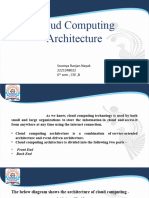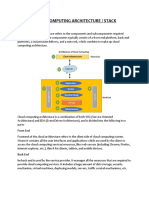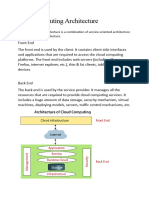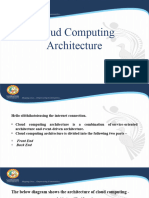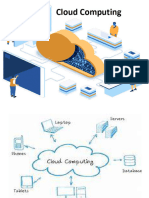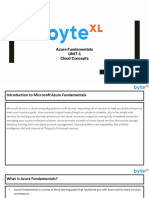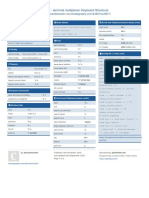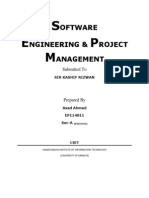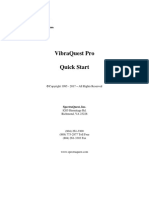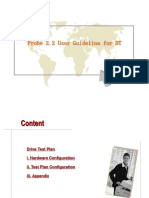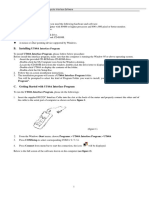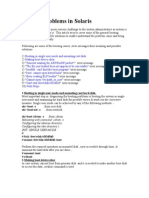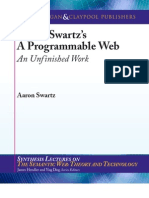0% found this document useful (0 votes)
29 views3 pagesCloud Computing Architecture
Cloud computing architecture consists of a front end, used by clients to access services, and a back end, managed by service providers to deliver resources. It includes various components such as client infrastructure, applications, services (SaaS, PaaS, IaaS), runtime cloud, storage, infrastructure, management, security, and the internet. This architecture enables organizations to store and access data from anywhere using internet connectivity.
Uploaded by
lavanyavenkatesh148Copyright
© © All Rights Reserved
We take content rights seriously. If you suspect this is your content, claim it here.
Available Formats
Download as DOCX, PDF, TXT or read online on Scribd
0% found this document useful (0 votes)
29 views3 pagesCloud Computing Architecture
Cloud computing architecture consists of a front end, used by clients to access services, and a back end, managed by service providers to deliver resources. It includes various components such as client infrastructure, applications, services (SaaS, PaaS, IaaS), runtime cloud, storage, infrastructure, management, security, and the internet. This architecture enables organizations to store and access data from anywhere using internet connectivity.
Uploaded by
lavanyavenkatesh148Copyright
© © All Rights Reserved
We take content rights seriously. If you suspect this is your content, claim it here.
Available Formats
Download as DOCX, PDF, TXT or read online on Scribd
/ 3





